Have you ever wanted a pet abominable snowman? How about a behemoth white dog, instead? Great Pyrenees are tall, white dogs that love the snow, and their protective nature makes them excellent livestock guardians. However, the American Kennel Club (AKC) considers them extremely affectionate with their family members and good with both other dogs and children. In fact, despite their lumbering size, they’re considered great emotional support dogs for anxiety!
Sold on welcoming a Sir SnuggleFluff into your hearts and homes? Before seeking out a rescue or breeder to help you find the best pooch for your family, there is one topic to consider: grooming a Great Pyrenees is a reasonable amount of work. Keep reading to learn everything you need to know to groom a Great Pyrenees properly.
Easy Grooming Starts with Training Your Great Pyrenees
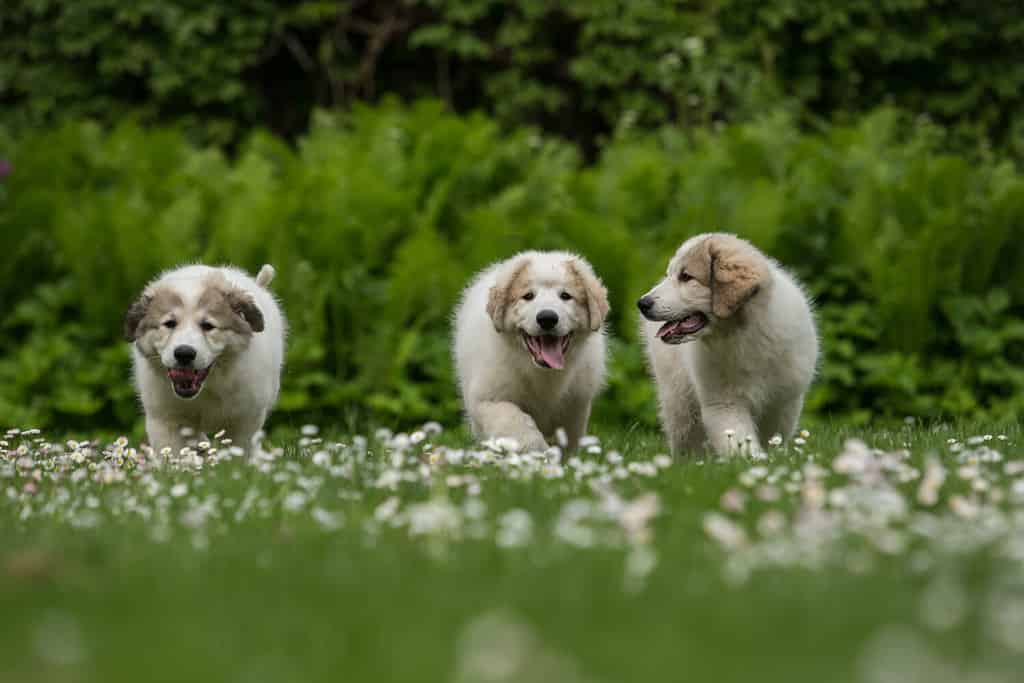
It’s important to begin introducing your Great Pyrenees puppy to grooming at a very young age.
©DTeibe Photography/Shutterstock.com
Regardless of whether you intend to groom your Great Pyrenees yourself or take your beloved ball of fluff to a groomer, it’s crucial to prep your pup early. As soon as you welcome one of these gentle giants into your home, start introducing them to being touched. Look in their ears, rub your fingertip across their teeth, separate their paw pads, and inspect their armpits. Keep these sessions short and fun, with plenty of rewards for good behavior. The more accustomed your pooch becomes to being handled, the easier they’ll be to groom – and even be examined at the vet!
Great Pyrenees Grooming 101: Brushing
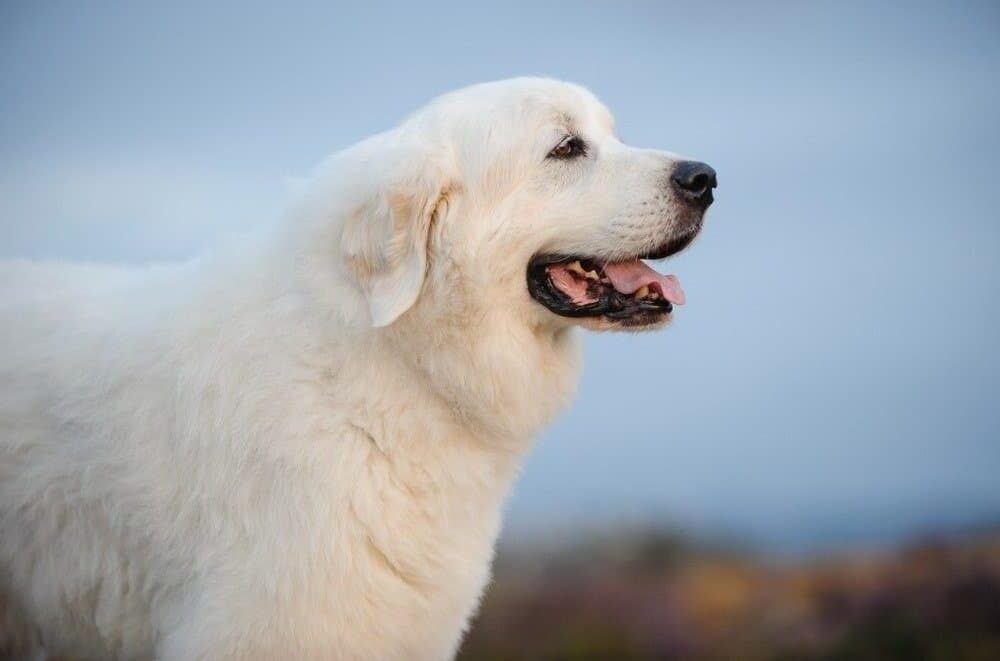
Great Pyrenees should be brushed weekly.
©everydoghasastory/Shutterstock.com
Because these massive pups are not hypoallergenic and shed often, brushing your Great Pyrenees at least weekly is a must. Additionally, these dogs are a double-coated breed, meaning their fur is dense and has a fine undercoat to provide added insulation. Regularly brushing your pooch’s big, fluffy coat will help prevent tangles from escalating into difficult mats, which can be painful to comb out.
First, start with a wide-toothed comb or grooming rake to work through any tangles. Next, take a metal slicker brush all over their bodies to remove as much loose fur as possible. Additionally, lifting each section of fur helps allow air to circulate, helping your pup’s skin breath. Typically, the area around a Great Pyrenees’s neck and shoulders will be the most dense. Other areas prone to tangles include the dog’s fluffy tail, underbelly, and rear end. Be particularly gentle around sensitive areas like ears and eyes. Also, be extra cautious not to catch your brush or comb on any of their extra dewclaws!
If your furry friend is sensitive to having mats brushed out, using a de-tangling conditioning spray can be helpful. However, under no circumstances should you shave your Great Pyrenees. Shaving a dog with a double coat can reduce their protection from temperatures, sun damage, brisk winds, and even parasites. If battling large amounts of tough mats, it’s better to use a pair of grooming shears to cut out individual mats, allowing your pooch’s overall coat to remain. It isn’t pretty, but it’ll get the job done.
The Perfect Pet-icure

Keep your Great Pyrenees’s nails short to prevent issues with walking and running.
©invisible invisible/Shutterstock.com
Grooming your Great Pyrenees doesn’t stop at just brushing your dog – their nails are also important! When nails become too long, it affects your pooch’s ability to walk comfortably and can even put unnecessary stress on joints. In extreme cases, overgrown nails can even begin to curl downward and eventually grow into their paw pads.
While every dog’s activity level and nail growth speed are different, it’s important to give your Great Pyrenees regular pet-icures. If your fluffy pup regularly walks on tough services, like concrete, they may only need a monthly trim. However, if Rover’s exercise consists mostly of running in grass, it may be necessary to clip his nails more frequently. Follow the easy tips below, or check out our full trimming guide here.
- Make sure you introduce your pooch slowly to having their nails trimmed. Handle their paws regularly so their feet are not sensitive or uncomfortable areas.
- If using a trimmer that makes noise, like an electric grinder, make sure you acclimate your pooch to the noise before trying to grind down their nails.
- When first teaching your pup to have their nails clipped, be very calm. Additionally, offer lots of praise and rewards when they sit still and allow you to clip their nails.
- Never gamble on your dog’s comfort. Don’t cut off huge chunks of nails, even if they are a bit overgrown. Be extra careful if your pooch’s nails are dark and you’re unable to see their quick.
- Consider trying a scratchboard instead of just clipping your pup’s nails. This makes grooming more like a game and less like a chore!
Focusing on the Pearly Whites (Not Just Their Fur)
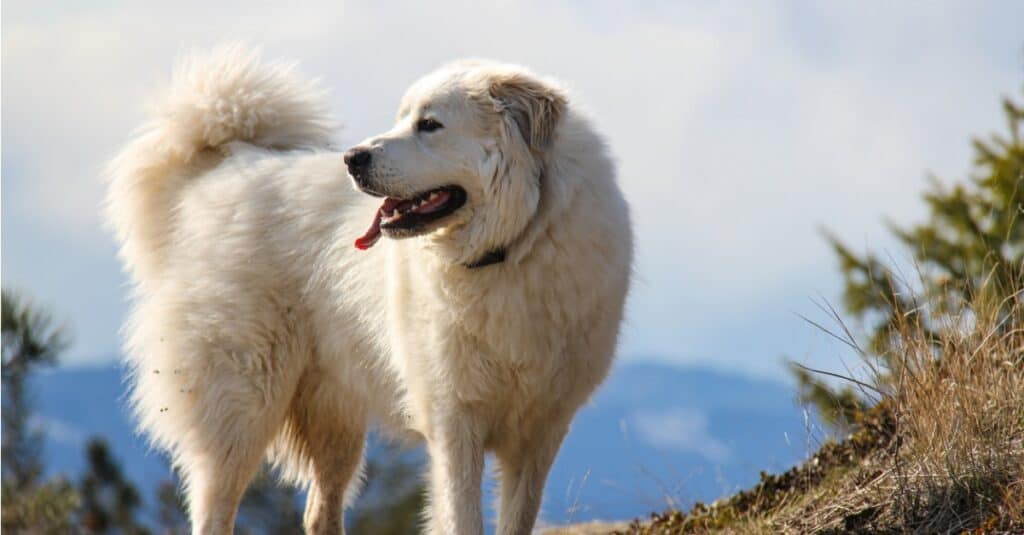
Good oral hygiene is important for all dogs.
©iStock.com/creativex
Great Pyrenees are known for their striking white fur, but don’t forget their stunning smiles! Oral hygiene is incredibly important for our canine companions, and regular brushing can help prevent tartar build-up, which can cause periodontal disease and more serious health conditions. Use dog-specific toothpaste and experiment with different types of dog toothbrushes to determine what works best for your pooch. While a twice-daily schedule like ours isn’t exactly necessary, daily or even twice-weekly brushings can help keep their pearly whites shining and minimize your risk of costly dental procedures at the vet. However, this habit is something that needs to start right away because brushing is a preventative practice. Once formed, hard build-up typically can only be safely removed by veterinarians while your furry friend is under anesthesia.
Conduct an Overall Body Check While Grooming Your Great Pyrenees
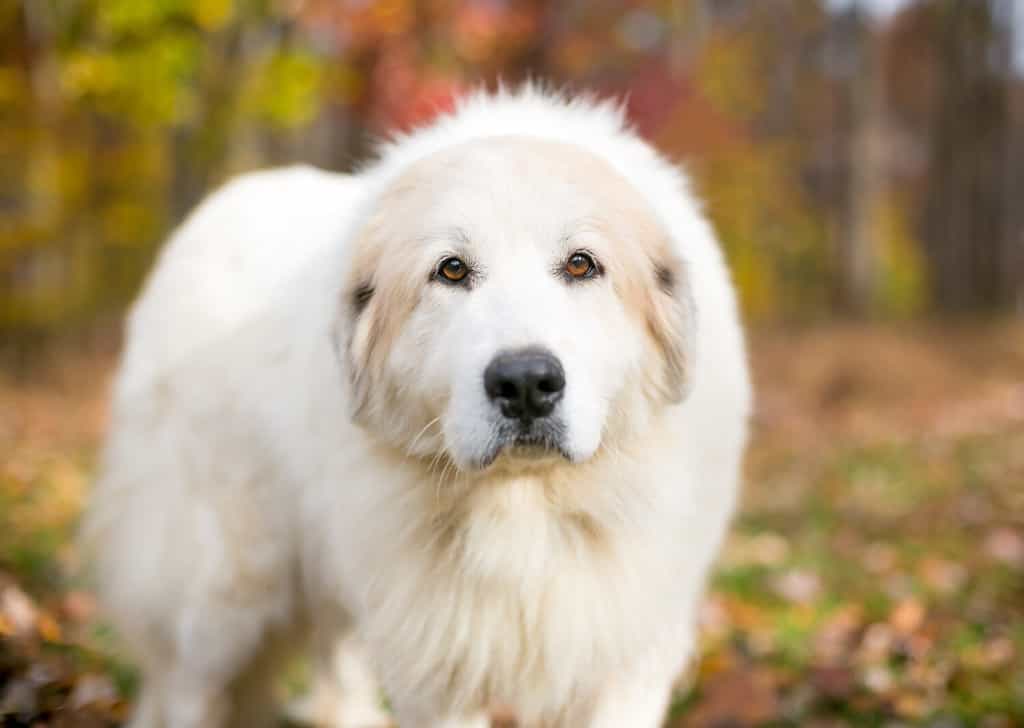
Check for any new injuries, lumps, and pests every time you groom your Great Pyrenees.
©Mary Swift/Shutterstock.com
When thinking about grooming a Great Pyrenees, fur, nails, and teeth are the first three topics that come to mind. However, an important step in grooming includes doing an overall wellness check. Your floofy friend is already sitting, standing, or laying down calmly, so why not use this time to make sure there are no other issues going on? Your pooch may think they’re getting a full-body massage, but really, you’re running your hands all across their body, checking for any injuries, parasites, or newly formed lumps. By catching any new bumps early, you’ll be better equipped to chat with your veterinarian and take any measures before they become a greater health issue. Lastly, flip their floppy ears over and look inside to see if there is any dirt or debris, and clean them out if necessary.
Bathing Your Fluffy Guardian

Great Pyrenees are working dogs that were bred to spend their time in the fields.
©Ingrid Curry/Shutterstock.com
While these massive mountains of fluff and drool may look like they will need tons of baths, their beautiful white fur and insulated double coat are actually somewhat dirt-resistant. With regularly brushing to remove any tangles and debris, your Great Pyrenees should really only require a bath every three or four months, unless they are visibly dirty or giving off an undesirable odor.
When it is time to hop in the tub, make sure you start your grooming session with a brushing first. Then, fully wet your pet Yeti. Work a dog-safe shampoo through every inch of their fur, being careful not to get any in their ears or eyes. Rinse your pooch thoroughly to make sure no dirt or shampoo residue remains. If especially filthy, you may want to do a second shampoo treatment to get them fully clean. Some shampoos are 2-in-1 with a conditioner, but if you’re using standalone products, repeat the previous steps with your pooch’s favorite conditioner. Some can be left in, so make sure to follow each individual product’s instructions.
Finally, it’s time to dry and do a last brushing session. If you have a blower, this may help expedite the drying process and assist in ridding your pooch of remaining loose fur. However, a standard hairdryer will get the job done – just much more slowly.
Enjoying Life with Your Great Pyrenees
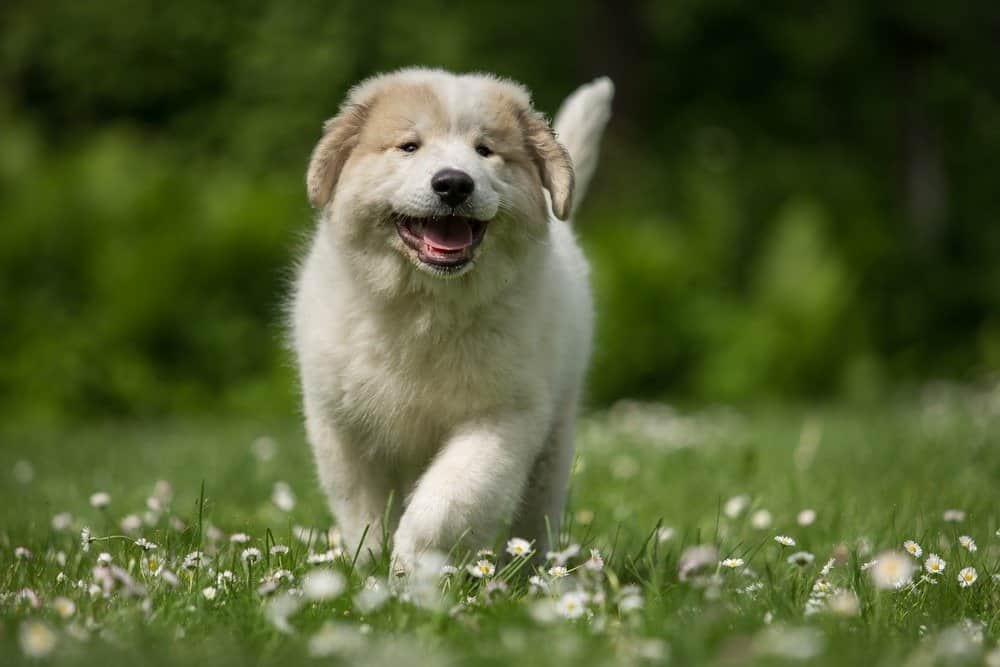
Great Pyrenees are great family dogs.
©DTeibe Photography/Shutterstock.com
Great Pyrenees are affectionate, protective, and intelligent dogs. While it may be hard to believe, due to their large size, they even adapt easily to many different homes and family types. However, their thick, double coat can make the idea of owning one of these loving pups a bit intimidating. With weekly brushings, trimming their nails, regular teeth brushing, and the occasional bath, grooming your Great Pyrenees will become an easy and even fun habit, and it’ll help you bond with your beloved furry friend.
Ready to discover the top 10 cutest dog breeds in the entire world?
How about the fastest dogs, the largest dogs and those that are -- quite frankly -- just the kindest dogs on the planet? Each day, AZ Animals sends out lists just like this to our thousands of email subscribers. And the best part? It's FREE. Join today by entering your email below.
Thank you for reading! Have some feedback for us? Contact the AZ Animals editorial team.








